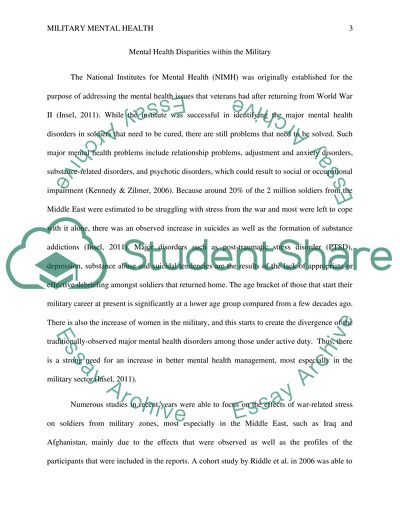Cite this document
(“Mental Health Disparity in the Military Research Paper”, n.d.)
Mental Health Disparity in the Military Research Paper. Retrieved from https://studentshare.org/health-sciences-medicine/1457481-mental-health-disparity-in-the-military
Mental Health Disparity in the Military Research Paper. Retrieved from https://studentshare.org/health-sciences-medicine/1457481-mental-health-disparity-in-the-military
(Mental Health Disparity in the Military Research Paper)
Mental Health Disparity in the Military Research Paper. https://studentshare.org/health-sciences-medicine/1457481-mental-health-disparity-in-the-military.
Mental Health Disparity in the Military Research Paper. https://studentshare.org/health-sciences-medicine/1457481-mental-health-disparity-in-the-military.
“Mental Health Disparity in the Military Research Paper”, n.d. https://studentshare.org/health-sciences-medicine/1457481-mental-health-disparity-in-the-military.


